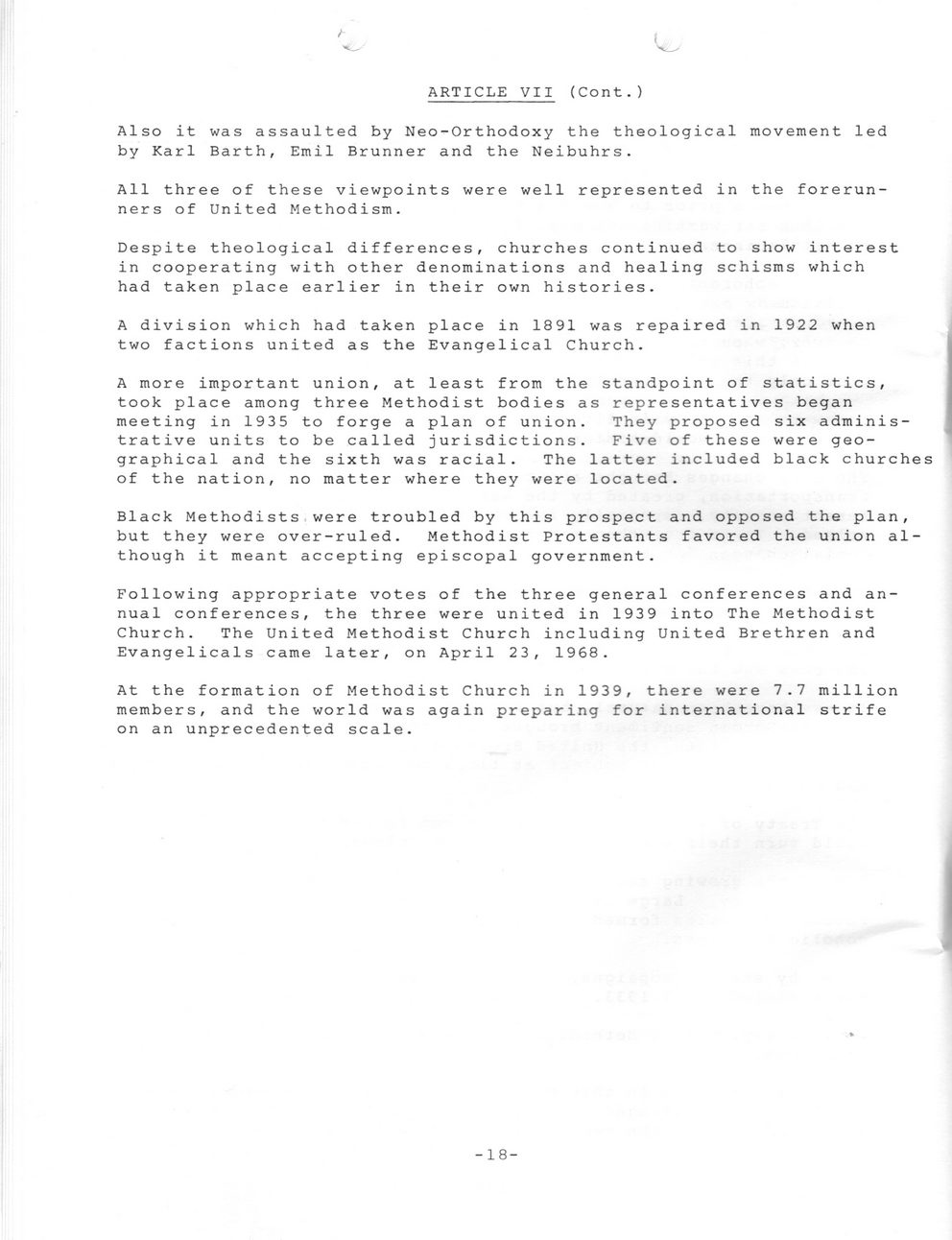This text was obtained via automated optical character recognition.
It has not been edited and may therefore contain several errors.
/- ARTICLE VII (Cont.) Also it was assaulted by Neo-Orthodoxy the theological movement led by Karl Barth, Emil Brunner and the Neibuhrs. All three of these viewpoints were well represented in the forerunners of United Methodism. Despite theological differences, churches continued to show interest in cooperating with other denominations and healing schisms which had taken place earlier in their own histories. A division which had taken place in 1891 was repaired in 1922 when two factions united as the Evangelical Church. A more important union, at least from the standpoint of statistics, took place among three Methodist bodies as representatives began meeting in 1935 to forge a plan of union. They proposed six administrative units to be called jurisdictions. Five of these were geographical and the sixth was racial. The latter included black churches of the nation, no matter where they were located. Black Methodists were troubled by this prospect and opposed the plan, but they were over-ruled. Methodist Protestants favored the union although it meant accepting episcopal government. Following appropriate votes of the three general conferences and annual conferences, the three were united in 1939 into The Methodist Church. The United Methodist Church including United Brethren and Evangelicals came later, on April 23, 1968. At the formation of Methodist Church in 1939, there were 7.7 million members, and the world was again preparing for international strife on an unprecedented scale. -18-

Main Street Methodist Church Document (030)